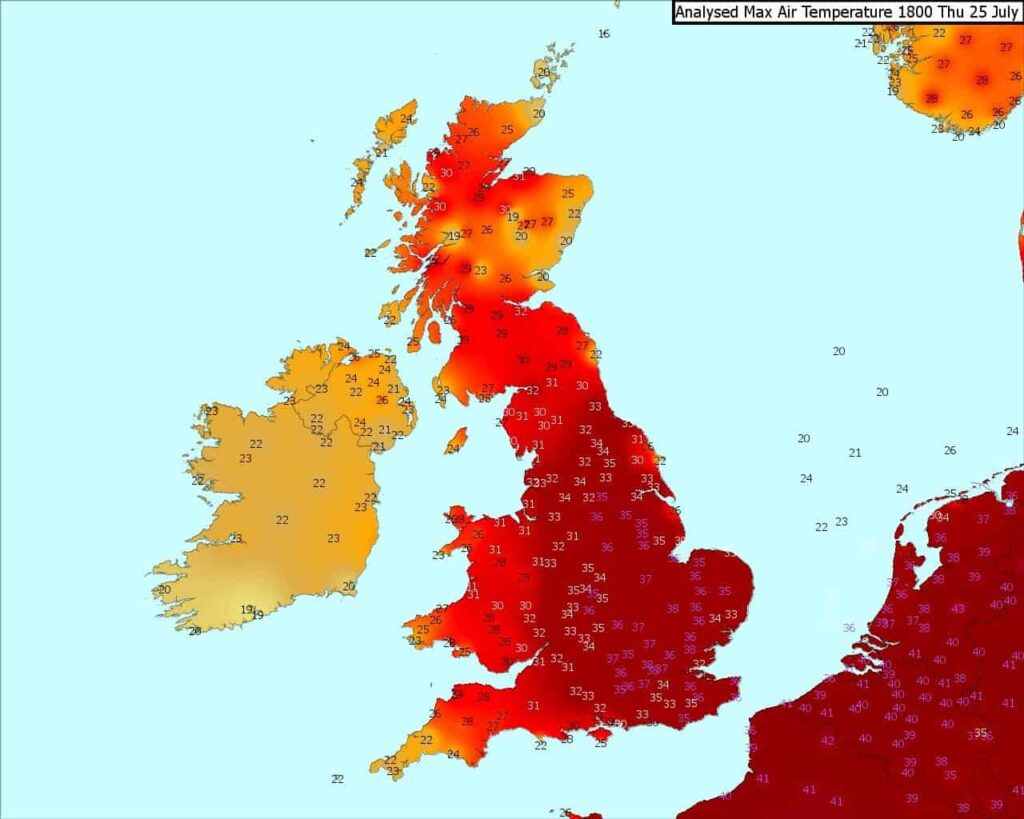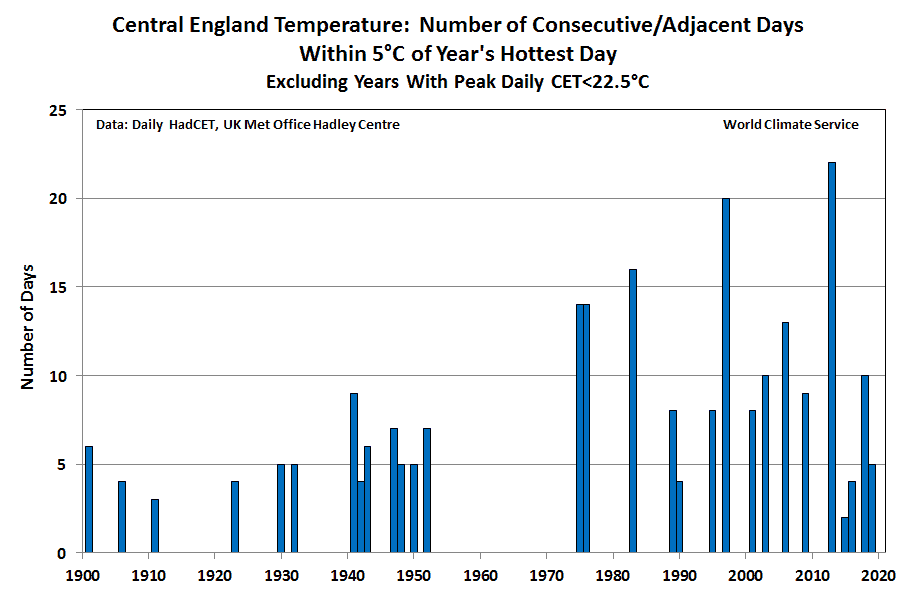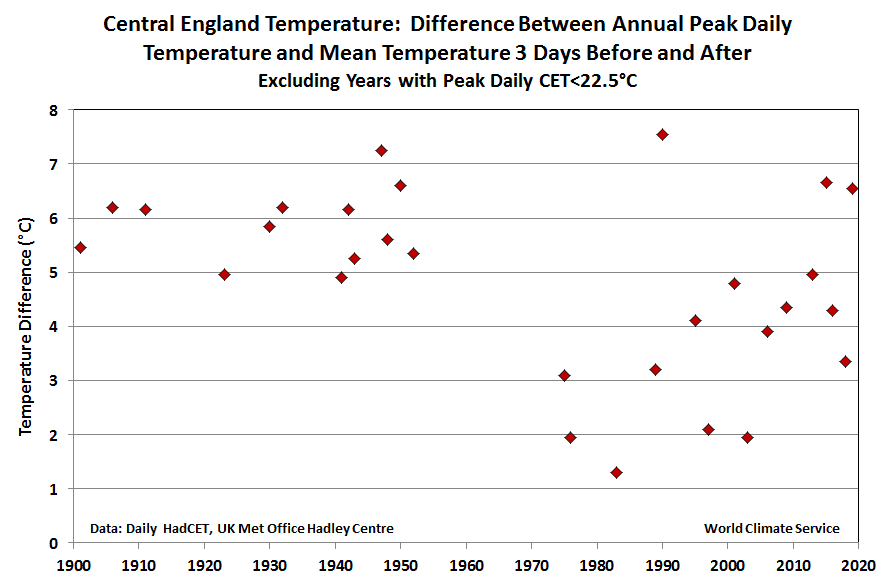In late July, an episode of extreme heat developed over western Europe for the second time in summer 2019, and the heat wave broke all-time high temperature records in several countries. Among these, the UK set a new high temperature record of 38.7°C (102°F) in Cambridge on July 25. As seen in the map below, temperatures that day reached 35°C even in parts of northern England.

A remarkable aspect of the heat wave was its short duration, as temperatures were near or even below normal just a few days before and after the peak of the heat. The seeming ease and rapidity with which temperatures soared to record levels was striking, and it is interesting to note that rather similar short-lived but intense heat waves occurred in England in the summers of 2015 (July 1) and 2016 (July 19-20). This raises the question of whether heat waves have become more sudden and short-lived in England in recent years.
As a first look at this question, we used the daily historical Central England Temperature data to examine the hottest episodes of each summer since 1900, and we focused on the events when daily CET reached 22.5°C or higher; these events occur about once every four years on average. For reference, the daily CET on July 25 of this year was 25.2°C, tying the all-time record from 1948.
After obtaining the top historical heat waves since 1900, we calculated the number of consecutive days during each heat wave when the daily CET was within 5°C of the peak daily CET; for example, for 2019 we count the number of days adjacent to July 25 for which the daily CET was 20.2°C or higher (only 5 days, July 22-26). The chart below shows the annual values for the duration of the top heat waves (29 events in 120 years).

The short duration of the heat waves in 2015, 2016, and 2019 is obvious at the end of the time series, but perhaps surprisingly the century-scale trend has been towards longer rather than shorter heat waves in England, according to the definition used here. In the first half of the 20th century, the hottest events tended to occur within rather brief windows of only a few days, but since 1975 it has been common to see more extended periods of relatively high temperatures. Apparently the brief but intense heat waves of 2015, 2016, and this year were more the exception than the rule in the climate of recent decades.
Heat Wave Trends
Another perspective is available by looking at the daily CET 3 days before and after the peak of the top heat waves (defined in the same way). Prior to about 1950, the temperature was typically at least 5°C cooler 3 days before and after the hottest day, but many of the more recent heat waves have not brought such sudden contrast in temperatures over a short period.

In conclusion, the daily CET data suggest that heat waves have actually become longer in recent decades in England, with less dramatic onset and ending in terms of daily temperature changes. Accordingly, the brief but intense hot spells of 2015, 2016, and 2019 appear to be more similar to the type of event that occurred prior to 1950 rather than the typical heat wave of the more recent climate.